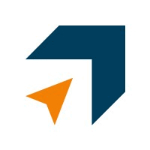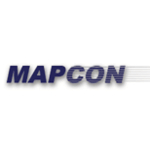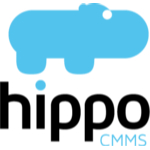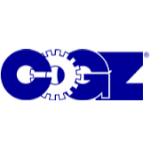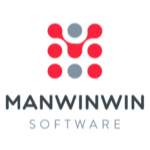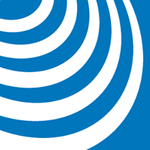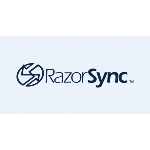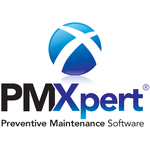List of Best Building Maintenance Management Software
Showing 10 of 29 productsFieldproxy is a software designed to optimize and simplify field operations for businesses. With its user-friendly interface features, Fieldproxy revolutionizes the way businesses manage their field tasks, resulting in increased efficiency and produc...Read Fieldproxy Reviews
MAPCON is a solution for all your maintenance needs. With advanced features and user-friendly interface, it simplifies maintenance processes and helps streamline operations. Trusted by numerous businesses, MAPCON is the go-to software for efficient a...Read MAPCON Reviews
UpKeep Asset is a solution for managing and tracking all your companys assets with ease. Say goodbye to the hassle of manual record-keeping and hello to a streamlined is a process with UpKeeps user-friendly interface. Simplify your asset management t...Read UpKeep Asset Reviews
Maxpanda CMMS is a solution for streamlined facility management. This user-friendly software allows you to efficiently track and maintain assets, schedule tasks, and manage work orders. Experience seamless operations and enhanced productivity with Ma...Read Maxpanda CMMS Reviews
Hippo CMMS - your all-in-one solution for streamlining maintenance operations. From tracking assets and work orders to scheduling and reporting, Hippo CMMS simplifies and organizes your maintenance processes. Say goodbye to chaos and hello to efficie...Read Hippo CMMS Reviews
COGZ the ultimate management and maintenance software that will revolutionize your business! Designed to streamline and simplify the complex process of managing assets, inventory, and maintenance, COGZ is a software that will increase efficiency, red...Read COGZ Reviews
ManWinWin is a is a maintenance management software designed to streamline your maintenance processes and maximize productivity. With user-friendly features, personalized support, tools, ManWinWin helps you keep your equipment and assets running smoo...Read ManWinWin Reviews
PlanRadar, the all-in-one project management software designed to streamline communication, collaboration, and organization for construction and real estate industries. Say goodbye to scattered documents and endless emails, and say hello to a simplif...Read PlanRadar Reviews
RazorSync is a solution for all your business management needs. With its user-friendly interface is a features, RazorSync streamlines and simplifies day-to-day operations, helping you save time and maximize productivity. Say goodbye to the hassle of...Read RazorSync Reviews
PMXpert is a software designed to simplify and optimize project management processes. With its user-friendly interface features, PMXpert streamlines collaboration, enhances efficiency, and increases productivity for teams of all sizes. Say goodbye to...Read PMXpert Reviews
- What Is Building Maintenance Management Software?
- Top Reasons Why Businesses Need Building Maintenance Management Software?
- What Are the Top Key Features of Building Maintenance Management Software?
- What Are the Top Benefits of Building Maintenance Management Software?
- What Are the Steps to Choose the Right Building Maintenance Management Software?
- What Are the Types of Building Maintenance Management Software for Different Industries?
- What Are the Technology Trends for Best Building Maintenance Management Software?
- What Are the Deployment Options for Building Maintenance Management Software?
What Is Building Maintenance Management Software?
Building maintenance management software is a comprehensive system specifically developed to facilitate the effective management of building maintenance and enhancement activities. Facilities managers benefit from the utilization of a comprehensive best building maintenance software that aids in the efficient monitoring and management of various maintenance jobs, encompassing both minor repairs and significant renovations.
This facilitates the seamless oversight of operations, thereby guaranteeing the optimal condition and operational efficacy of buildings. Additionally, commercial property maintenance software program has the capability to maintain a comprehensive log of all accomplished maintenance jobs, hence facilitating the process of scheduling future maintenance activities.
The commercial property maintenance software commonly offers a variety of functionalities, including asset tracking, online submission of maintenance requests, and scheduling tools, enabling facilities managers to effectively monitor and address maintenance requirements in a timely manner.
The utilization of building maintenance management software facilitates the optimization of regular maintenance activities, the monitoring of maintenance-related expenses, and the comprehensive oversight of structures to assure their sustained structural integrity.
Top Reasons Why Businesses Need Building Maintenance Management Software?
1. Enhanced operational efficiency through the implementation of automation for routine chores and scheduling, facilitating precise monitoring of requests, and optimizing communication channels among personnel, tenants, and vendors.
2. The quality of work was enhanced by the implementation of various strategies, including progress tracking, measurement of service standards, and prioritization of tasks.
3. The use of comprehensive documentation of accomplished assignments, expenditures, and invoices facilitates a rigorous auditing process, hence promoting heightened responsibility.
4. Enhanced safety and adherence to regulations through the proactive monitoring of building conditions and the implementation of proactive safety activities.
5. One benefit of automating administrative operations is the reduction in costs often associated with manual labor. Additionally, automation can lead to greater accuracy in certain processes.
6. Best building maintenance software provides valuable insights into the handling of work requests and the duration required to accomplish jobs.
7. The procurement processes were made more efficient with the implementation of a centralized platform that facilitated the collection, analysis, and comparison of data from many providers.
8. One way to improve the client experience is by implementing efficient and accurate systems for sending notifications, tracking orders, and processing payments.
9. The implementation of real-time monitoring systems for repairs, maintenance, and compliance chores aims to mitigate the potential legal liability associated with citations.
10. The capacity to seamlessly incorporate with other systems, including accounting and property management, in order to enhance interdepartmental collaboration.
11. The implementation of automated systems for scheduling preventative maintenance with the aim of mitigating the likelihood of expensive emergency repairs.
12. One of the key advantages of utilizing a unified platform is the seamless management of multiple worksites, locations, and tasks.
13. One feature of the system is the implementation of automated reminders and notifications, which serve the purpose of ensuring timely completion of tasks.
14. Historical data is utilized to monitor trends and conduct analytics in order to enhance performance over a period of time.
15. Enhanced customer service by prompt and effective responsiveness to service inquiries.
What Are the Top Key Features of Building Maintenance Management Software?
The key features of building maintenance management software include:
1. Automated work order management: This functionality facilitates the automated generation, allocation, and monitoring of work orders, enabling personnel to efficiently prioritize activities and monitor their advancement.
2. Data insights: This functionality offers a comprehensive examination of both present and past maintenance endeavors, with the aim of identifying probable patterns and facilitating prompt problem resolution.
3. Asset Management: This functionality allows users to monitor maintenance inventories and promptly retrieve records to ensure the effective and efficient management of all components.
4. Scheduling: The aforementioned feature enhances the efficiency of service scheduling by employing automated notifications to inform contractors of available work and subsequently assigning the job to appropriate personnel.
5. Reporting & Analytics: This functionality offers customers immediate access to comprehensive performance indicators pertaining to equipment, staff, and processes in real-time.
6. Mobile access: This functionality offers employees a secure mobile application that enables them to efficiently input and retrieve data from automated operations within the system.
7. Security & Compliance Monitoring: This functionality offers instantaneous notifications in order to guarantee adherence to all safety measures.
8. Integration: This functionality enables the integration of building management software with other software applications, including accounting software and customer relationship management (CRM) systems.
What Are the Top Benefits of Building Maintenance Management Software?
1. Improved efficiency: The utilization of building maintenance management software facilitates the automation and optimization of workflows, hence obviating the necessity for manual procedures and paperwork. Consequently, this leads to enhanced operational effectiveness and heightened production levels.
2. Cost savings: The utilization of commercial property maintenance software facilitates automated processes and optimized workflows, resulting in a reduction of expenses associated with manual labor and resource allocation.
3. Increased safety: The utilization of best building maintenance software in automated processes can offer an augmented level of safety for individuals, equipment, and property.
4. Streamlined communication: The utilization of construction maintenance software facilitates the acquisition of up-to-date information through an integrated dashboard, hence enhancing the efficiency and expediency of communication with facility personnel and other relevant parties.
5. Increased visibility: The implementation of a comprehensive, automated system utilizing building maintenance management software facilitates enhanced accessibility to consolidated and pertinent data within a singular platform, hence facilitating more informed and effective decision-making procedures.
6. Improved compliance: The utilization of building maintenance management system can effectively contribute to the adherence to industry or municipal laws through the provision of current information and timely alerts.
7. Reduced paperwork: The utilization of commercial property maintenance software mitigates the necessity to develop and administer physical paper forms and reports, hence streamlining the process of documentation and data tracking.
What Are the Steps to Choose the Right Building Maintenance Management Software?
1. Assess software needs: This inquiry pertains to the identification of maintenance management requirements for a facility or organization, as well as the determination of building maintenance management system characteristics necessary to fulfill these objectives.
2. Research vendors: Upon conducting a thorough assessment of your requirements, it is recommended that you engage in extensive research pertaining to vendors and software solutions. This will enable you to identify and select those that possess the capability to effectively fulfill your needs.
3. Gather data: In order to facilitate an effective comparison of various solutions, it is advisable to compile a comprehensive list of parameters, including but not limited to budgetary considerations and desired features.
4. Narrow down options: Utilize the collected data to refine the options and arrive at a limited set of potential resolutions.
5. Test solutions: Evaluate each alternative that has been selected for consideration by requesting demonstrations and/or free trials.
6. Check vendor history: Building maintenance management system is advisable to conduct a thorough examination of the vendor's historical background, past performance, level of customer service, client base, and capacity for scalability.
7. Finalize your choice: The ultimate decision should be based on user feedback, pricing considerations, and the level of convenience in integrating the chosen option.
What Are the Types of Building Maintenance Management Software for Different Industries?
The categorization of best building maintenance software for various businesses may be classified into three primary groups.
1. Preventative maintenance software: This program facilitates the automation of scheduling routine maintenance and inspections, so contributing to the reduction of labor and parts expenses by ensuring timely completion of preventative tasks, often preempting potential issues.
2. Computerized maintenance management system (CMMS): This particular program has the capability to efficiently monitor and oversee regular maintenance activities, hence enhancing the precision, transparency, and efficiency of such operations. The Computerized Maintenance Management System (CMMS) guarantees that tasks are completed within the designated time frame and generates a comprehensive record of each procedure along with its corresponding costs.
3. Facility management software: This particular software offers a comprehensive solution for effectively managing many aspects of a building, encompassing tasks such as cleaning and scheduling, budgeting, and energy management. Facilities, such as hospitals, universities, and government buildings, frequently employ it as a means to enhance their operational efficacy and overall effectiveness.
What Are the Technology Trends for Best Building Maintenance Management Software?
When selecting the optimal software for building maintenance management, it is crucial to take into account the prevailing technological developments. Several recent patterns can be identified, including the following:
1. Cloud-based Solutions: The popularity of cloud-based solutions is on the rise due to its ability to offer a convenient and safe means of storing and retrieving data across several devices. In addition, these systems generally exhibit a lower cost compared to conventional or on-premise solutions.
2. Automation tools: The integration of automation tools has emerged as a prominent feature inside contemporary building maintenance management software. The utilization of automated tasks can effectively mitigate errors and enhance the efficiency of maintenance job management.
3. Real-time Analytics and Reporting: The most recent software for managing best building maintenance software offers the capability to generate real-time analytics and reports, facilitating the monitoring of trends and performance. The utilization of this data can contribute to the effective management of maintenance jobs, ensuring their prompt execution while minimizing associated expenses.
4. Integration: The integration of construction maintenance software with other systems, such as inventory or accounting software, is essential. The interface facilitates enhanced data-sharing capabilities, hence contributing to increased efficiency and the potential elimination of redundant data entry.
5. Mobile Application: The integration of mobile applications has become more essential in the realm of building maintenance management software. Mobile applications provide a convenient means to assess, document, and allocate work from any geographical location.
What Are the Deployment Options for Building Maintenance Management Software?
The selection of deployment choices for building maintenance management software is contingent upon the specific requirements of the company.
The most common options for construction maintenance software include:
1. On-premise – An on-premise deployment necessitates the acquisition of a licensed copy for installation on a real or virtual server. This alternative provides a high level of control, although it may necessitate substantial training for effective management and upkeep.
2. Software-as-a-Service (SaaS) – This concept entails the hosting of the software on an online platform, which may be accessed by users through a web browser. The management and maintenance of the system is undertaken by the vendor. This necessitates minimal organizational upkeep and does not entail a substantial initial expenditure.
3. Cloud Hosting – This concept entails the hosting of the software on an online platform, which may be accessed by users through a web browser. The management and maintenance of the system is undertaken by the vendor. This necessitates minimal organizational upkeep and does not entail a substantial initial expenditure.
